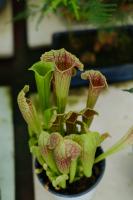What Takes Up Water in Plant Cells and Controls Turgor
Plant cells are unique in their ability to regulate their shape and support through the control of water and its movement. The mechanism that takes up water and regulates turgor in plant cells is a complex process involving various proteins, ions, and membranes.
Cell Walls and Turgor Pressure
One of the most critical aspects of turgor control in plant cells is the presence of cell walls. Plant cells are surrounded by a thick, rigid cell wall made of cellulose, hemicellulose, and lignin. These walls act as a barrier and keep the cells from bursting under pressure, but they also exert pressure back onto the cells, which helps regulate the cell shape and turgor pressure.
The turgor pressure is the force exerted by the cell wall on the cell's protoplast, which is the living part of the cell that contains the nucleus, cytoplasm, and other organelles. Turgor pressure helps maintain cell shape and rigidity and plays a crucial role in the functioning of plant cells.
Water Uptake Mechanisms in Plant Cells
One of the primary mechanisms that take up water in plant cells is osmosis. Osmosis occurs when water moves from an area of high water concentration to an area of low water concentration across a semi-permeable membrane. In plant cells, the cell wall acts as a semi-permeable membrane that allows the movement of water into the cell but restricts the movement of other solutes.
Another process that takes up water in plant cells is facilitated diffusion. Facilitated diffusion occurs when water moves across the plasma membrane through specific channels or transporters. For example, aquaporins are a group of membrane proteins that selectively transport water across the plasma membrane in plant cells.
The Role of Ion Transport in Turgor Control
The movement of ions also plays a critical role in turgor control in plant cells. In particular, potassium ions (K+) are known to be important in the control of turgor pressure. K+ ions are actively transported into the cell by specialized transporters called K+ channels. Once inside the cell, K+ ions create an osmotic gradient that causes water to move into the cell, increasing turgor pressure.
In addition to K+ ions, other ions such as calcium (Ca2+) are also involved in the control of turgor pressure. Ca2+ ions play a role in regulating the activity of ion channels and transporters, which affect the movement of water and ions across the plasma membrane.
The Role of Hormones in Turgor Control
Hormones are another crucial component in the regulation of turgor in plant cells. For example, abscisic acid (ABA) is a hormone that regulates water uptake and loss in plant cells. When the plant is under stress, for example, due to drought, ABA is synthesized and triggers a cascade of responses that help the plant conserve water by reducing water loss through transpiration and promoting water uptake through the roots.
Other hormones such as gibberellins and cytokinins also play a role in turgor control by affecting cell growth and division. Gibberellins promote cell elongation, while cytokinins promote cell division, which can affect the shape and size of the cell, and hence, its turgor pressure.
Conclusion
Water uptake and turgor control in plant cells are complex processes involving various mechanisms such as osmosis, facilitated diffusion, ion transport, and hormone signaling. Understanding these processes is essential for developing strategies to improve crop yields and to adapt plants to changing environmental conditions such as drought or salinity stress.

 how many times do yo...
how many times do yo... how many planted tre...
how many planted tre... how many pine trees ...
how many pine trees ... how many pecan trees...
how many pecan trees... how many plants comp...
how many plants comp... how many plants can ...
how many plants can ... how many plants and ...
how many plants and ... how many pepper plan...
how many pepper plan...




























